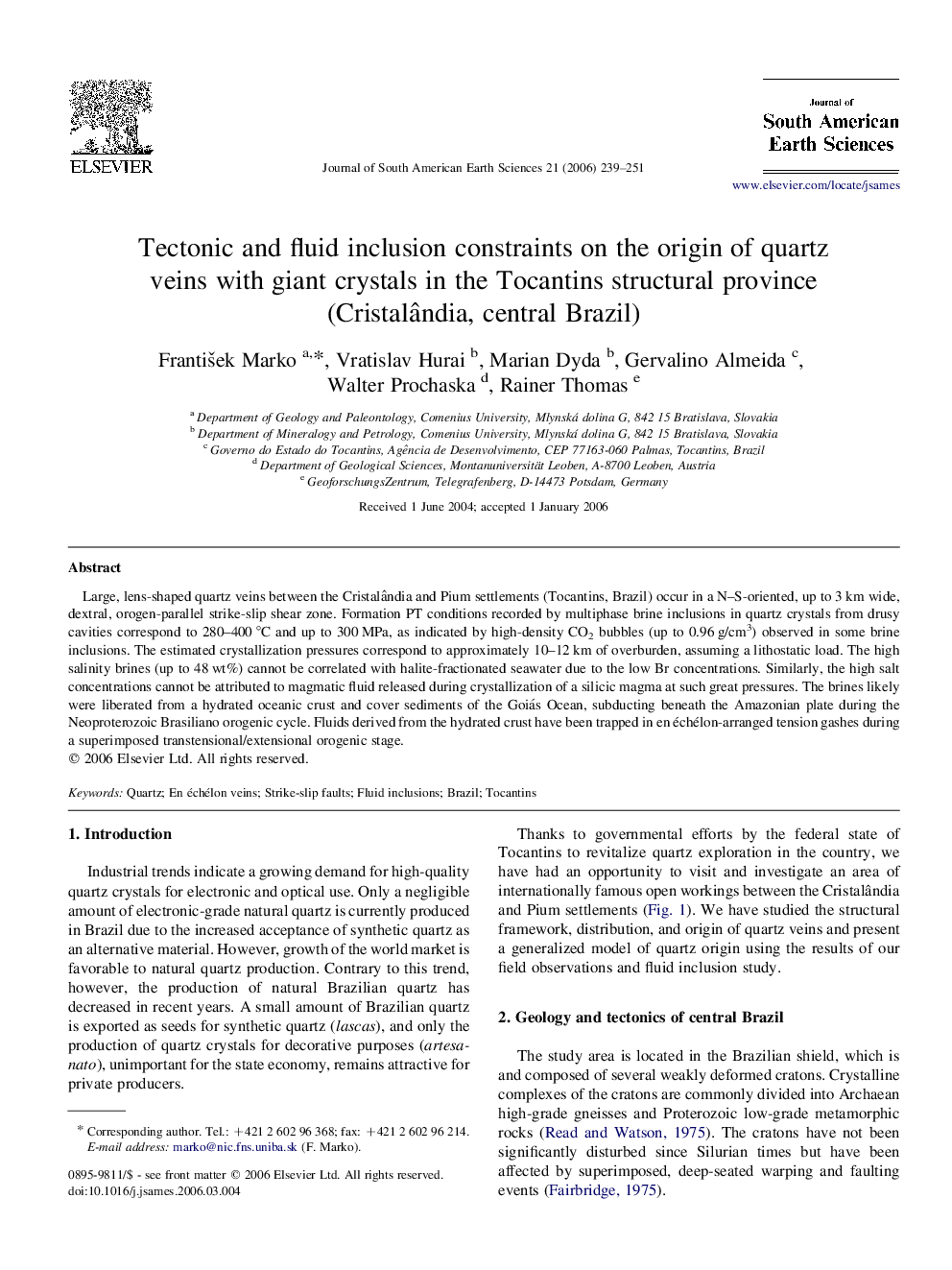| Article ID | Journal | Published Year | Pages | File Type |
|---|---|---|---|---|
| 4682965 | Journal of South American Earth Sciences | 2006 | 13 Pages |
Large, lens-shaped quartz veins between the Cristalândia and Pium settlements (Tocantins, Brazil) occur in a N–S-oriented, up to 3 km wide, dextral, orogen-parallel strike-slip shear zone. Formation PT conditions recorded by multiphase brine inclusions in quartz crystals from drusy cavities correspond to 280–400 °C and up to 300 MPa, as indicated by high-density CO2 bubbles (up to 0.96 g/cm3) observed in some brine inclusions. The estimated crystallization pressures correspond to approximately 10–12 km of overburden, assuming a lithostatic load. The high salinity brines (up to 48 wt%) cannot be correlated with halite-fractionated seawater due to the low Br concentrations. Similarly, the high salt concentrations cannot be attributed to magmatic fluid released during crystallization of a silicic magma at such great pressures. The brines likely were liberated from a hydrated oceanic crust and cover sediments of the Goiás Ocean, subducting beneath the Amazonian plate during the Neoproterozoic Brasiliano orogenic cycle. Fluids derived from the hydrated crust have been trapped in en échélon-arranged tension gashes during a superimposed transtensional/extensional orogenic stage.
